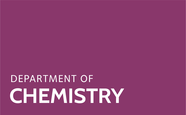Although supported solid amine adsorbents have attracted great attention for CO2 capture, critical chemical deactivation problems including oxidative degradation and urea formation have severely restricted their practical applications for flue gas CO2 capture. In this work, we reveal that the nature of surface hydroxyl groups (metal hydroxyl Al–OH and nonmetal hydroxyl Si–OH) plays a key role in the deactivation mechanisms. The polyethyleneimine (PEI) supported on Al–OH-containing substrates suffers from severe oxidative degradation during the CO2 capture step due to the breakage of amine-support hydrogen bonding networks, but exhibits an excellent anti-urea formation feature by preventing dehydration of carbamate products under a pure CO2 regeneration atmosphere. In contrast, PEI supported on Si–OH-containing substrates exhibits excellent anti-oxidative stability under simulated flue gas conditions by forming a robust hydrogen bonding protective network with Si–OH, but suffers from obvious urea formation during the pure CO2 regeneration step. We also reveal that the urea formation problem for PEI-SBA-15 can be avoided by the incorporation of an OH-containing PEG additive. Based on the intrinsic understanding of degradation mechanisms, we successfully synthesized an adsorbent 40PEI-20PEG-SBA-15 that demonstrates outstanding stability and retention of a high CO2 capacity of 2.45 mmol g−1 over 1000 adsorption–desorption cycles, together with negligible capacity loss during aging in simulated flue gas (10% CO2 + 5% O2 + 3% H2O) for one month at 60–70 °C. We believe this work makes great contribution to the advancement in the field of ultra-stable solid amine-based CO2 capture materials.
Urea formation
,Long-term stability
,CO2 capture
,Oxidative degradation
,Solid amine adsorbent




